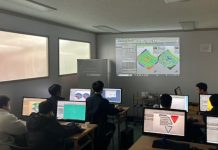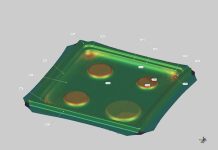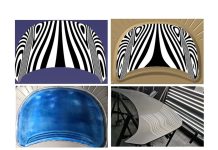The Future of Optimizing Cost Planning in One Big Sweep
[dropcap]A[/dropcap]n overview of optimizing value engineering is given in this article thanks to Axel Maurer, Senior Consultant at AutoForm and specialized on Planning and Bidding Solution. In this article we talk about state of the art planning solutions and identify powerful areas for cost minimization. This is part one of a three part series on implementing Planning and Bidding Solution.
What is the reason OEMs are so interested in using an advanced calculation system such as AutoForm? Axel Maurer answered with: ‘The demand for OEMs to start using something like AutoForm for its calculation system is observed along the entire process chain of the automotive development process. It starts from the early phase of styling, choosing a car’s design-theme, by management-committees deciding ‘yes this is the car we want in serial production, based on a target price of say €15.000. OEMs enter a roughly two year development phase before they can start production. Within this period occurs several phases: early digital prototyping, production planning, process engineering and tool manufacturing for all the parts and tools needed to produce this vehicle. Throughout this entire process chain, spanning 12 to 24 months, it is necessary that OEM’s have transparent overviews of piece and tool costs’

‘Upon deciding to produce a specific car the OEMs also know the specifications such as size, engine power, how many they’ll produce etc. but most interestingly they have determined the price. As a result of market analysis they know what the car should cost for the end buyer. In determining this end user affordability a top-down calculation is set in stone, creating budgets and constraints. Throughout the entire process those budget limitations must be met. This is exactly why OEMs require transparent overviews of piece and tool cost which is met through AutoForm.’
‘A target budget is generated for all the parts, and going deeper – a budget is even calculated for each individual tool. Currently, what method OEMs use to arrive to such budget figures is drawn from either experts; who have long term experience, or software, where AutoForm comes in.’
Axel explained further, saying ‘After this fact, during the development of the part design there is a steady updating influence (plan/cost refinement loops) between stamping process layout and part design. Here, the part geometries itself is not set in stone, as its geometries will change to adapt to realizations and improvements found during the automotive development process. Consider crash simulations, dynamic simulations, and styling modifications etc. all of which show adaptions that must be made to the parts’ geometries. Furthermore the process layout, (how to manufacture the parts with how many operations) is effected as a result. A cost driver between process layout and value engineering can be seen for example when one considers if a part is made in three, four or five operations.’
The Question of Accuracy, Obstacles and Reaching Target in Cost Planning
‘If a part design is constantly having its geometries adapted, along with its stamping process layout, then somebody has to inspect not only the feasibility of forming but also feasibility of cost. Because budget planning was established from the start – OEMs know if they are within or over target costs. It is a consequent demand that when the part changes the process layout is affected so the cost updates and it requires proofing. This is an interactive loop. Some OEM’s simply doing this loop in order to monitor and track the cost effects. Innovative OEM’S make out their big chance for what they call ‘Total Cost Minimization’ (TCM). It implies a total cost optimized balance between part geometries and process layout, based on a constant update of cost calculation.’
‘As a consultant, with in-house observation of OEM processes, it is clear there is much scope for improvement in this area. The performing of TCM requires room cost transparency, fast proofing of alternative process layouts, a hand on the current design for parts, its adaptions updated and brought back into the system, and thus a strong feedback loop.’
‘As for obstacles; one of the factors that diminish TCM is time pressure and lack of resources in the coordination process, which very often forces the team to focus on technical request. The coordination requires a lot of people work concurrently on Total Cost Minimization; but the more organized and monitored the better. Plus, as of today no software is perfect, on this we must be clear. Neither is implementation done perfectly. In fact this is a new market that has emerged only recently, say over the last five years, where value engineering software is the next level.’
‘It’s no secret that there is a race in the market to be the FIRST ONE with a comprehensive solution, to become the champion of this movement armed with a value engineering tool that fits to reality. We are well positioned with our Planning and Bidding Solution which is the most powerful tool for identifying cost savings and helping to strengthen cost planning in value engineering.’

Many requests have to be respected at same time,
in order to realize a “Minimum Total-Cost”
Thank you Axel for this fascinating interview.
In part two we follow up this article with more information. For now, please rate this article (up to five stars) and don’t forget to subscribe to our blog. We’ll never send you marketing emails. You’ll just receive blog post updates once per month.













